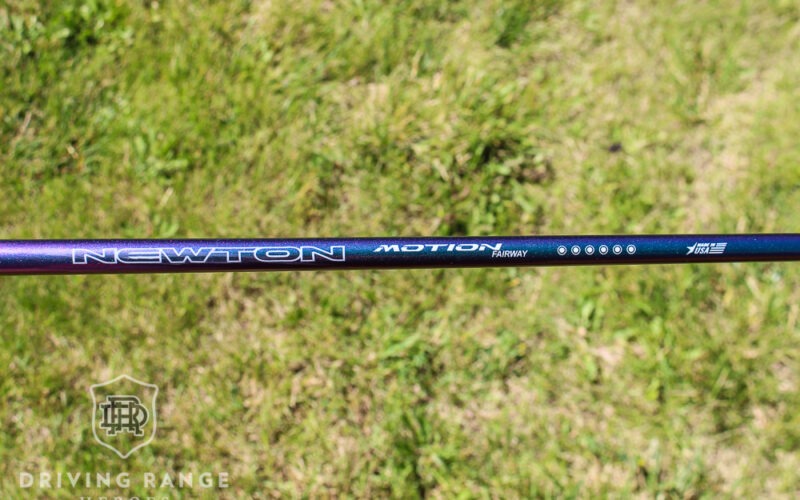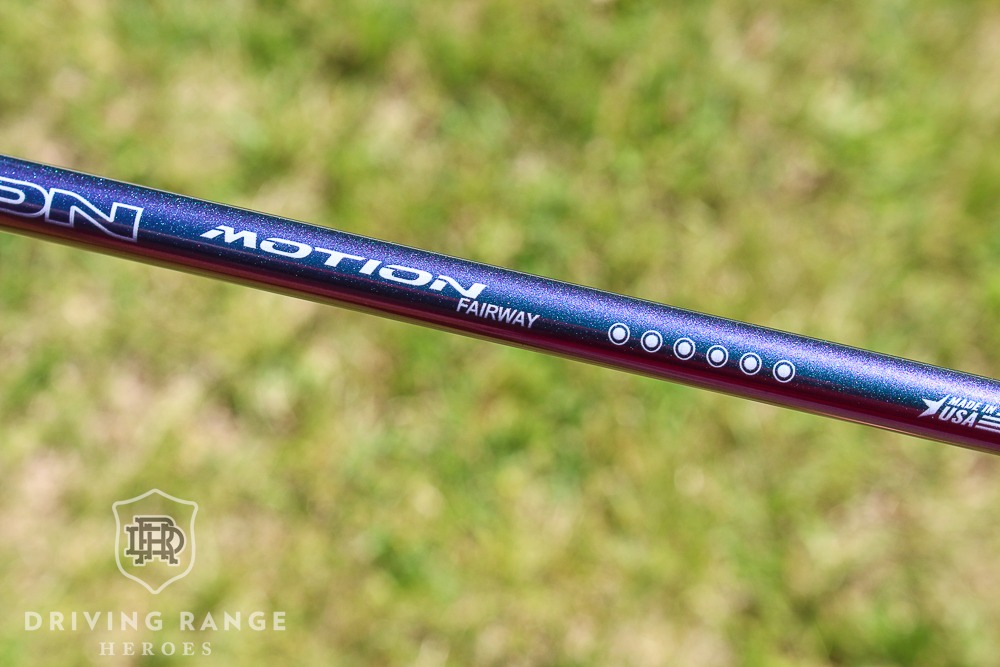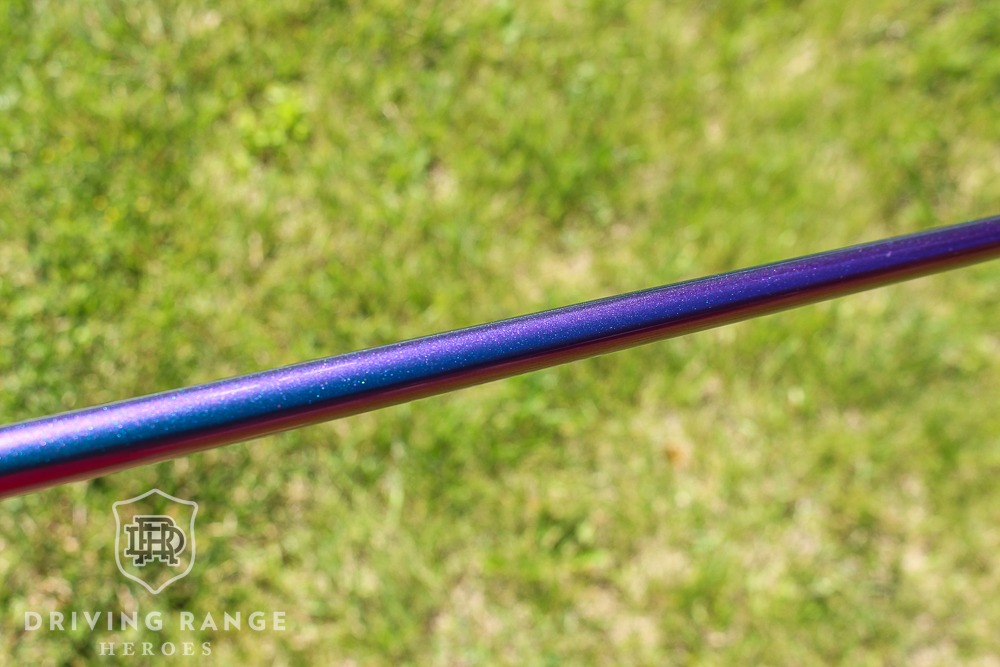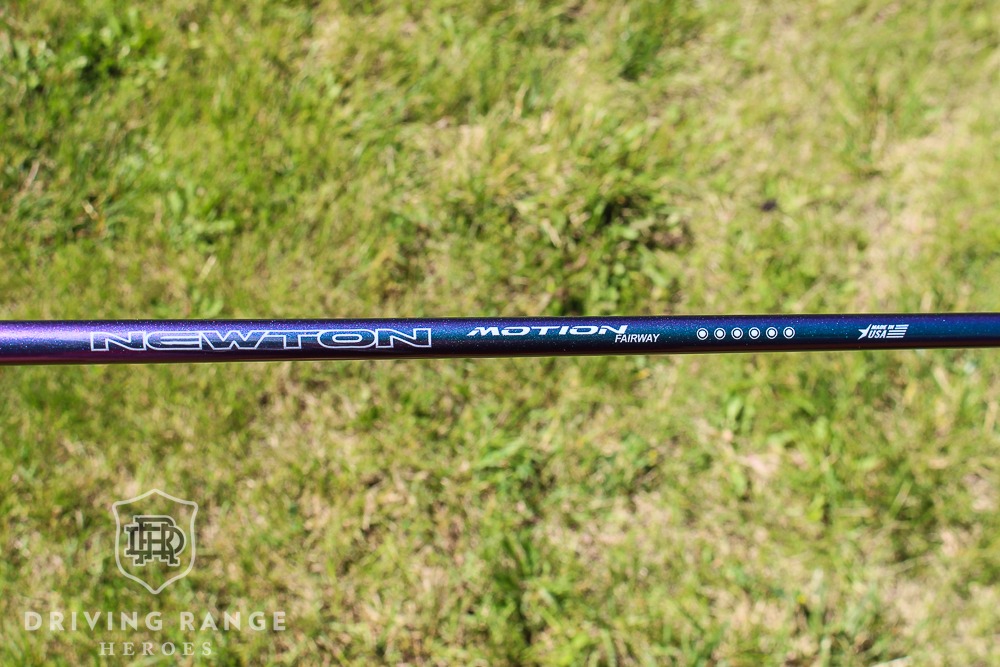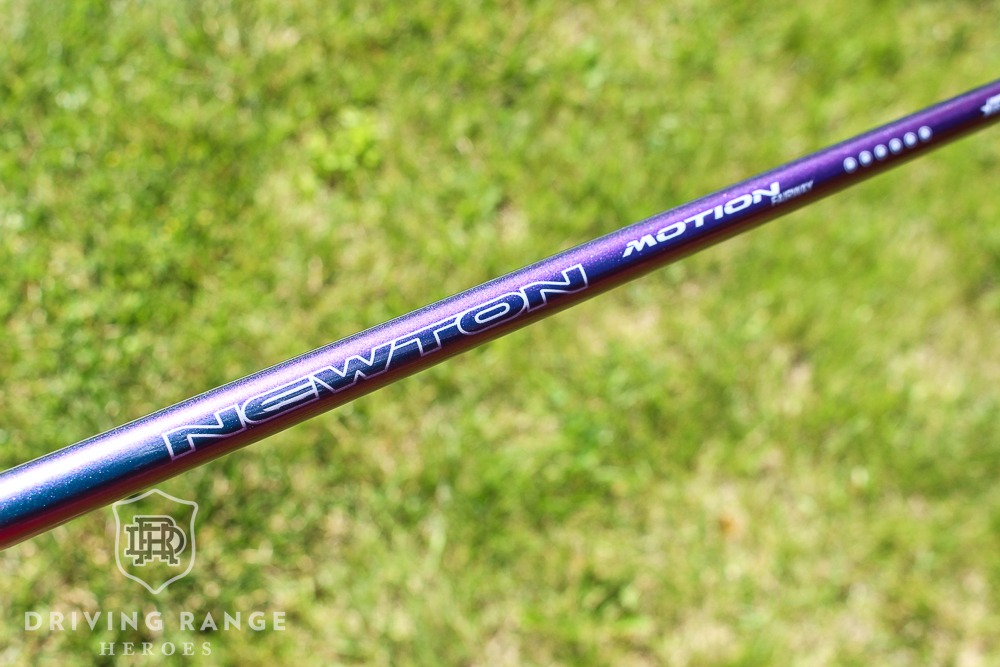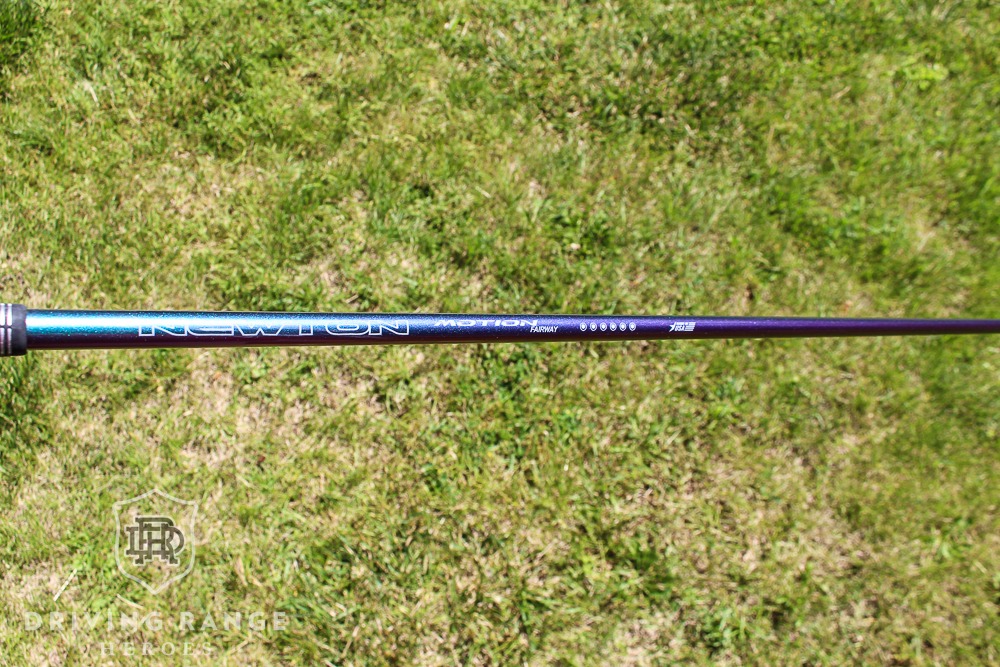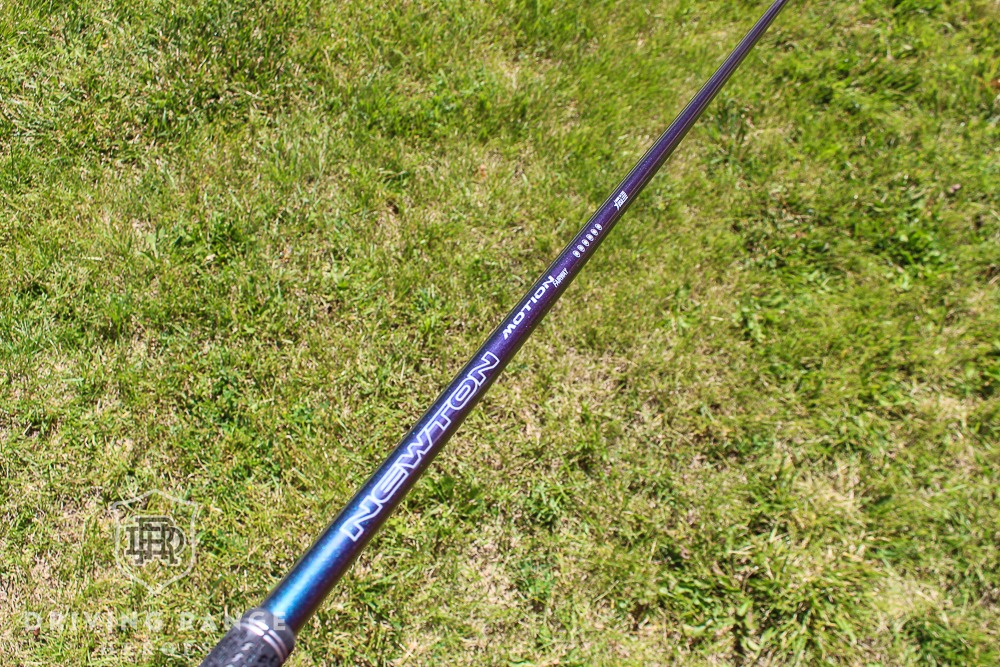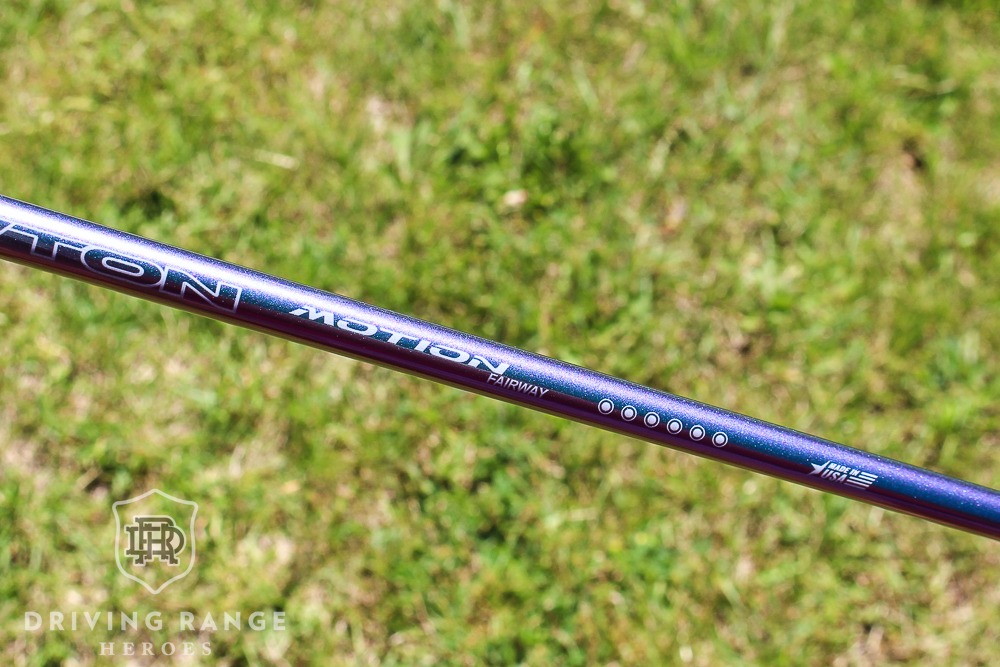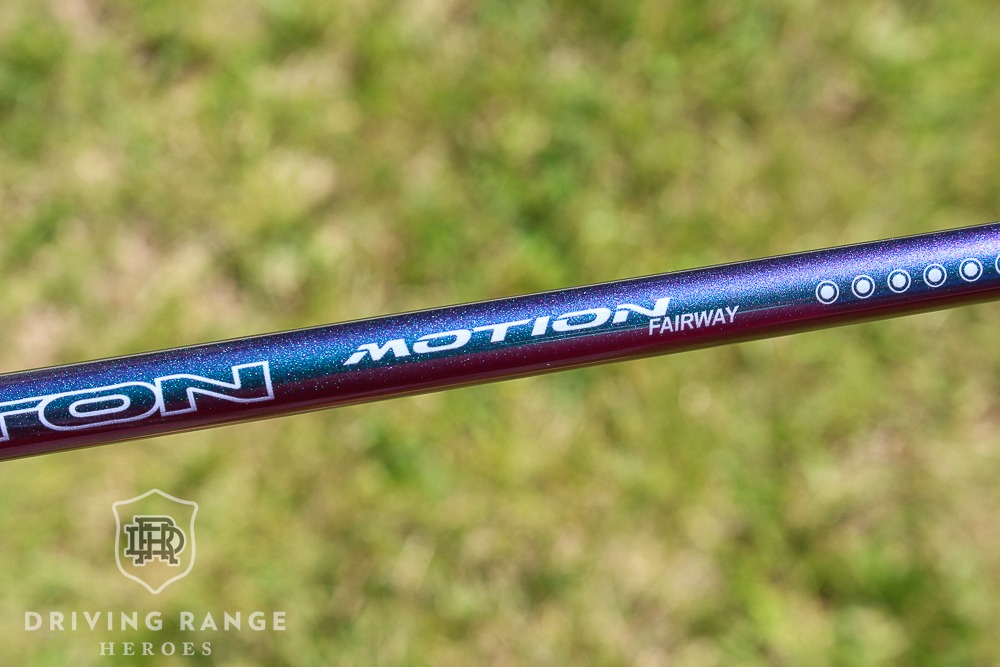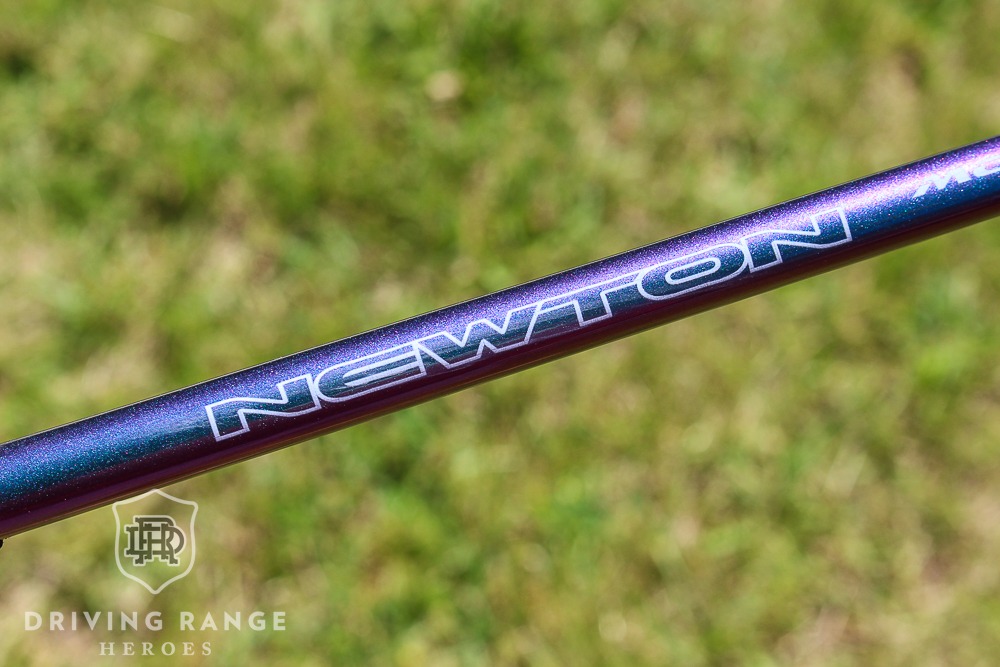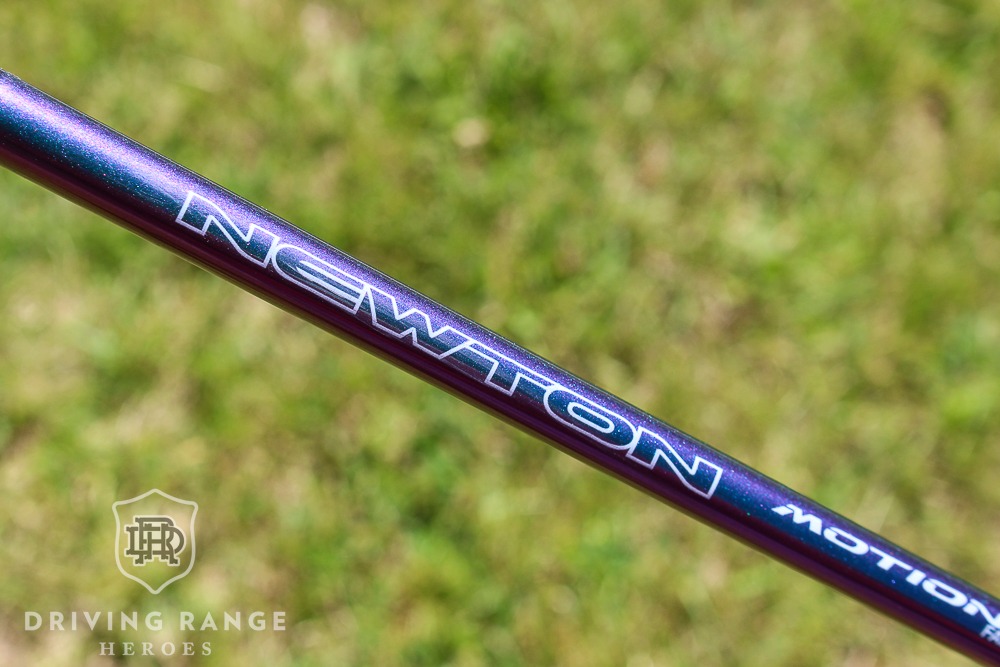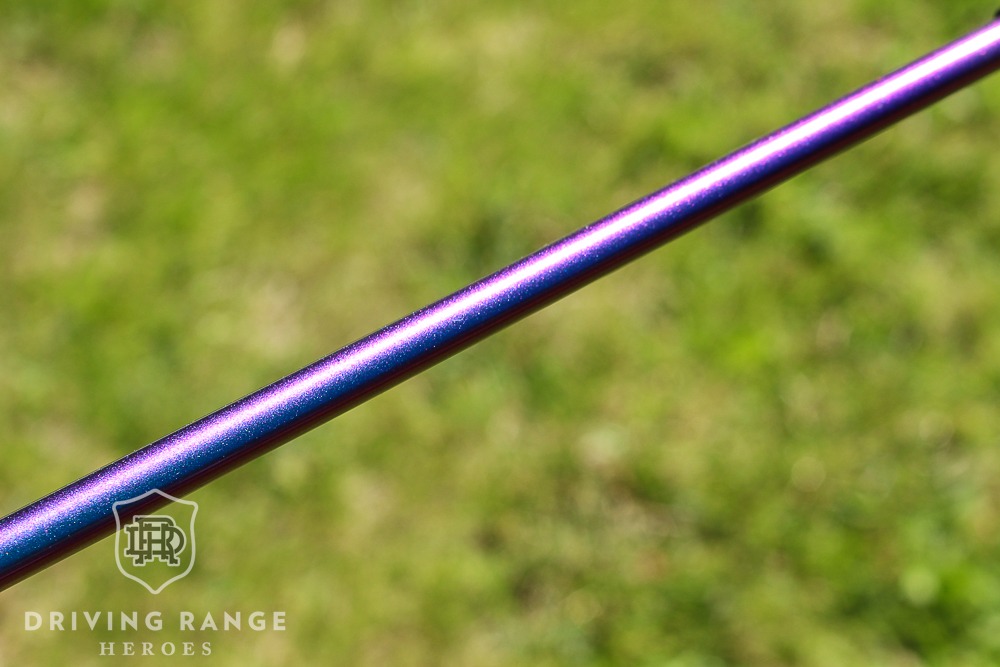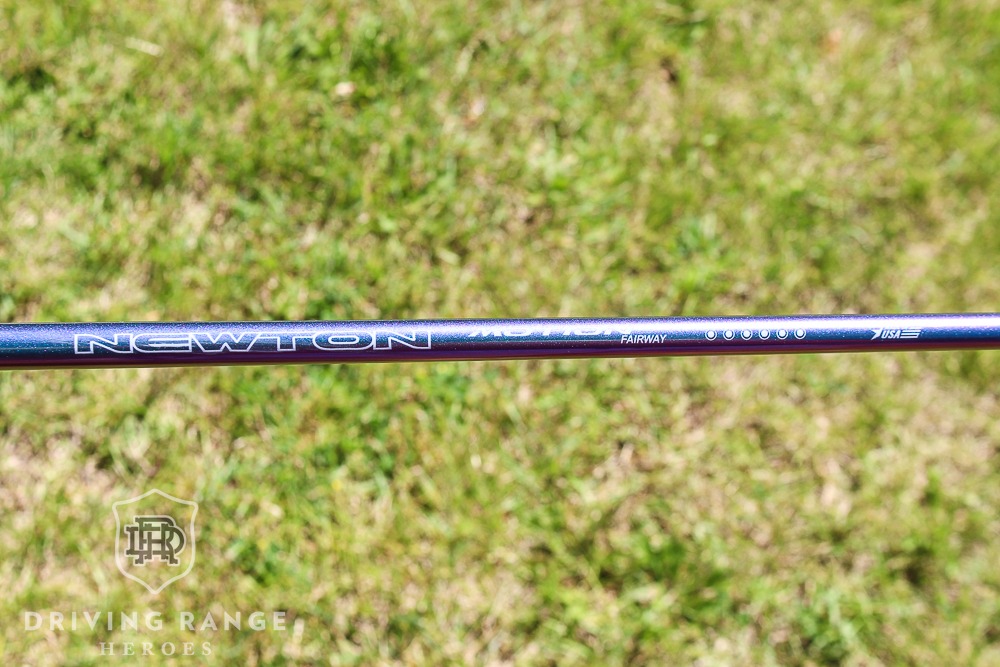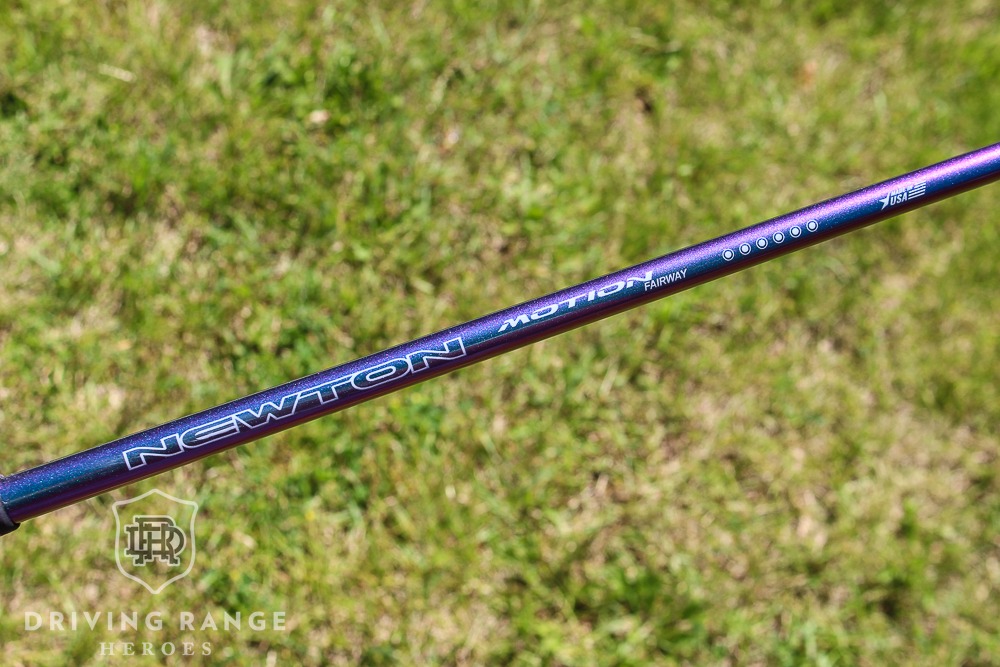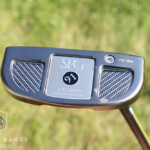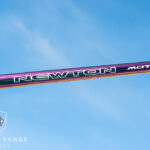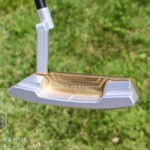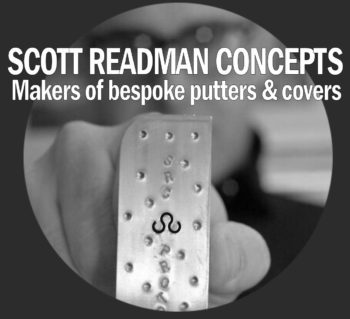Newton Motion Fairway Wood Shaft
After seeing fairly rapid adoption and success in their newly launched driver shaft, Newton Shafts has added a fairway wood option to their lineup. If the Newton Shafts name is new to you, Sacks Parente Golf, previously known for their unique putters, has now entered the shaft market via their Newton Shafts imprint. The concept behind the new Newton Motion shaft is that players will be able to hit the ball further without having to swing harder. To achieve this, Newton uses an elongated bend profile, a “Symmetry 360 design”, their proprietary “Kinetic Storage Construction”, and variable torque profiles across six different flexes. This review focuses solely on my experience with the Newton Motion fairway wood shaft. I tested the shaft in a Cobra Darkspeed LS three wood.
The Looks
Newton went with the the same iridescent finish in the fairway wood shaft that was used on the driver shaft. This finish changes as it moves through the light. While the primary base is purple, when in motion you’ll get pops of green, copper, gold, and blue. It’s a really good looking finish. The only branding is a white outlined “Newton” logo and the blurred “Motion” wordmark. I thought the blur effect to make it look “in motion” was pretty clever. A series of dots which reflect the shaft flex rather than the usual “regular, stiff, etc”. There’s also “fairway wood” notation to distinguish it from its driver counterpart.
How Does it Feel?
Shaft flexes are noted by number of dots as opposed to things like gender, age, etc. As they say, the golf club “doesn’t know any of these things”. Instead, Newton assigns CPM numbers to a dot value and provides suggested swing speed ranges for each flex. The number of dots ranges from 1 to 6, going from lightest to stiffest respectively. Additionally, the lighter flexes will have more torque while the stiffer flexes will have less torque. This is because players’ torque needs at those speeds/flexes will be very different. This is Newton’s “variable torque profiles by flex” concept.
Newton also utilizes “elongated bend profiles”. This means that rather than have a more distinct kick point, the shaft will flex over a longer area. Like the torque, the location of this bend area will vary by flex. For instance, the lightest flexes will bend more toward the tip section and the stiffest flexes will be up toward the handle. I didn’t necessarily get along so great with this feel in the driver shaft, but I felt much better with the fairway wood model. The smoother bend felt easy to load/unload without feeling too loose. My aggressive tempo was still a bit much for consistent control, but the fairway wood version felt more responsive and easier for me to manage.
On-Course Performance
| Club Speed | Ball Speed | Launch Angle | Spin | Carry (Yds) | Total (Yds) |
|---|---|---|---|---|---|
| 104.2 | 151.1 | 12.5º | 2912 | 253 | 264.5 |
The Newton Motion driver shaft’s performance really comes down to the Symmetry 360 design and Newton’s Kinetic Storage construction. Symmetry 360 is a process in which the shaft is manufactured without a seam or spine so there aren’t any inconsistencies in the construction. As such, the shaft will perform at its full potential no matter how it’s oriented in the club.
Newton’s Kinetic Storage construction is really designed to be their secret sauce. The idea is that the shaft’s fibers store more energy that gets released through the elongated bend area. With a larger area to store and release energy, and more energy getting stored, the idea is that your same swing can produce more power. Even further, this should help you make a more controlled swing that produces distance. Aka, you can make a smooth swing and get distance without swinging out of your shoes.
Similar to the driver shaft, the Motion fairway wood shaft was definitely conducive to an easier swing. I’ve generally had issues consistently launching the Darkspeed LS fairway wood without having to really push it, but the Motion really helped resolve this for me. It was still a little spinny for me, and I had to take a little off of it to stay under control. I’d be interested to see what would happen if I tipped it a bit. Could I still easily launch it, take my spin down a bit, and gain a little more control? Maybe I’ll test that out…
Final Thoughts – Newton Motion Fairway Wood Shaft
The Newton Motion fairway wood shaft is an intriguing option for golfers seeking easier launch, and possibly more distance. The Motion’s unique design, with its elongated bend and variable torque profiles, promotes a smoother feel and easier loading/unloading of energy. Additionally, the Kinetic Storage Construction aims for more distance potential without requiring a forceful swing. Although I found the shaft to be a bit spinny, tipping it might be a solution for golfers seeking to firm it up a touch. Newton does offer the Motion uncut so you can trim to your preferred specs should you choose to do so. Overall, the Newton Motion fairway wood shaft’s design and competitive price of $225 make it a compelling option worth considering.

